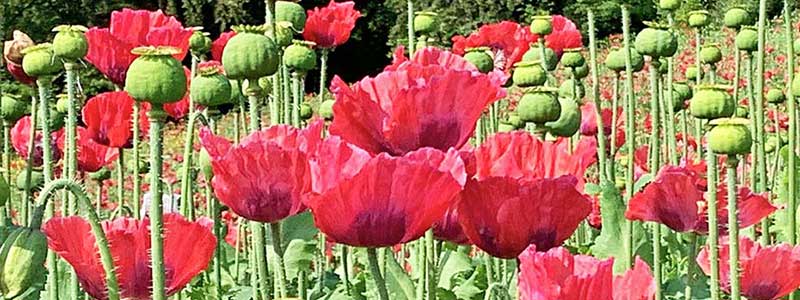
The value of soil
In the materiality analysis within the framework of a sustainability strategy for wineries, the soil is the top priority. A fact that is given far too little consideration in current certifications.
August 2020
Photo © Michaela Stark
Translation with DeepL
When it comes to corporate social responsibility, this one question is fundamental: What is essential for the prosperity of my company and in which area does it have the greatest impact on society, nature and stakeholders? In the case of wineries, this is primarily the soil. For this reason, it must be given the greatest attention when it comes to sustainability strategies and certification.
The direct impulse for the (renewed) debate on the topic of "sustainability certification" was a discussion in the social media and the accusation of greenwashing against supra-regional seals because virtually all of them allow herbicides and pesticides. Such as in Austria, California, New Zealand, Alentejo or New Zealand (Recently the article »Sustainable Wine? Or Just Greanwashing?« by the WineSearcher or the summary of a Porto Protocol Climate Talk »How do organics and biodynamics affect a vineyard's carbon footprint?« were just published in the Decanter.)
On the part of the sustainability labels, it is argued that the type of viticulture - conventional, organic or biodynamic - is only one spectrum of the picture. Because it is not the wine that is certified, but the winery. That is also correct. It is still not really understood that sustainability and organic winegrowing are not counter-models, but that winegrowing is part of the sustainability pillar ecology. The other two pillars are called society and economy. In my opinion, however, the crucial importance of soil is disregarded in the discourse.
What is essential? In international and industry-independent sustainability standards (ISO 26000, SDGs) and in recognized sustainability reporting (e.g. GRI), we start with a MATERIALITY ANALYSIS: What is essential for my company and its business purpose and where is my sphere of influence on the supply chain, stakeholders, society, ...? One must pay particular attention to these important factors in one' s sustainability strategy, avoid negative effects and reinforce positive ones.
In the materiality analysis of viticulture, the soil is in first place. If it breaks down, I'll ruin my own business. If it breaks down, I damage the environment and society. Because only healthy soil can absorb CO2e, whereas depleted soil emits CO2e. The more fertile a soil is and the greater its biodiversity, the more CO2e it can absorb.
Swiss long-term study. See also the FiBL long-term study published recently in German language: "Climate impact of biological soil management." It shows the potential of organic farming to mitigate climate change and that the humus, which acts as a CO2e sink, is even better built up by biodynamic agriculture than by organic farming. The fact that soil fertility is now essential for the evaluation of soil by the financial world-true cost accounting-is an additional factor. Tobias Bandel von Soil & More is one of the great experts in this field. All the more reason for wineries to focus on the recovery of their soil.
Conclusio. The conclusion is that the status of soil in the relevant sustainability certifications must be raised and organic farming must be an indispensable criterion and goal. It should be noted that the conversion period should be three years, so that as many non-organic farms as possible participate and the change to truly sustainable viticulture can be made as broadly and quickly as possible. That is one thing.
Paris Agreement. The other is that the world needs to cut 40% of all greenhouse gases by 2030 to meet the Paris climate targets. This applies to every company and therefore every winery, but also to each and every one of us. However, the above-mentioned certifications do not currently set any targets (the Austrian seal "Sustainable Austria" is in the process of changing in this respect) and do not depict key figures on CO2, energy, soil CO2 etc., but rather diagrams. The winegrowers therefore only vaguely know where they stand and do not know where to go. Without concrete objectives, the climate targets cannot be achieved. Which is why the usefulness of these seals is questionable as long as no improvements are made here. In addition, they do not meet consumer expectations either. Because most of them equate sustainability with organic!
If you want to learn more about sustainability & wine, you will find more in my PRESENTATION »Thinking about the future of winemaking«.




